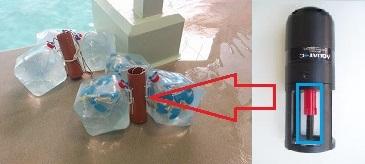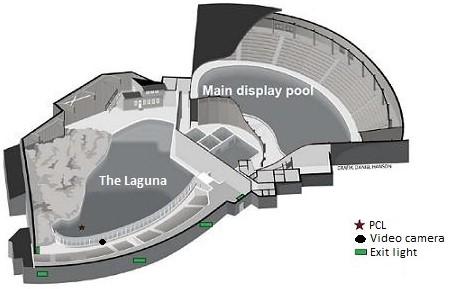Method

In the present study three setups (control, floats and fish; Fig 1) were used to investigate whether dolphins would prefer live fish as an sonar target instead of air filled floats (which are presently used as echolocation enrichment at Kolmården) or a control. All the setups were constructed in the same way. A PCL (porpoise click logger, Fig 1) was located (with the hydrophone directed downwards) inside a plastic tube, with three 20 liter transparent plastic bags surrounding it. The bags were filled with either just water (control), air filled floats (which were supposed to simulate the swim bladder of a fish) or live fish (three goldfish in each bag). All the components were fastened by rope and held in place by three small plastic clutches located inside the plastic tube. A screw of metal with a head on both sides was used to keep the PCL from falling out of the tube during the test.

The setups were tested in a total of seven times on the dolphins (n=8) at Kolmården Wildlife Park. During the test the setup was suspended under a float, with a rope, in the Laguna (Fig 2) during 4 hours where the PCL, located in the middle of the setup, recorded all the clicks the dolphins directed towards the setup. A video camera (Fig 2) was also used to collect video footage of all the behaviours directed towards the setups by the dolphins for behavioural analysis later on.
Responsible for this page:
Director of undergraduate studies Biology
Last updated:
05/24/16
